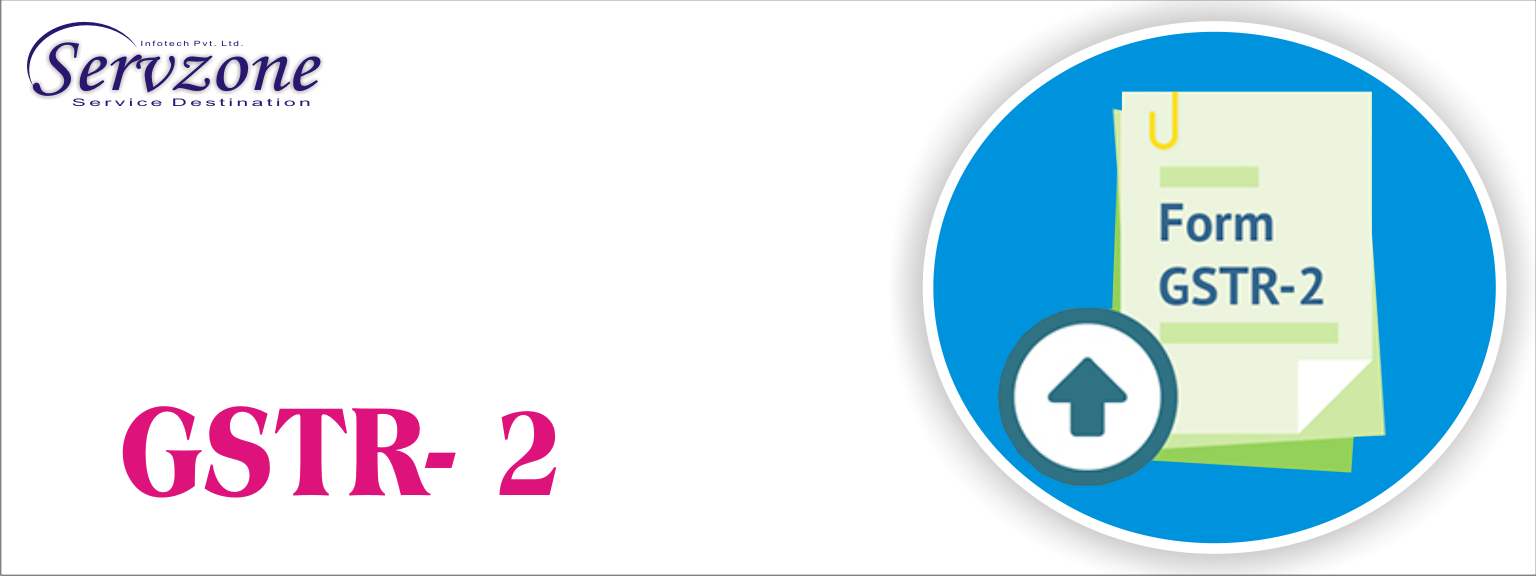Get Started With
servzone
GSTR-2
GSTR-2 is the return for reporting the inward supplies of goods and services i.e. the purchases made during a tax period. The details in the GSTR-2 return are auto-populated from the GSTR-2A. Unlike GSTR-2A, the GSTR-2 return can be edited.
GSTR-2 is to be filed by all normal taxpayers registered under GST, however, the filing of the same has been suspended ever since the inception of GST.
Due Dates of Filing GST Returns
These returns are as per the CGST Act*
|
Return Form |
Description |
Frequency |
Due Date |
|
GSTR-2 Suspended from September 2017 onwards |
Details of inward supplies of taxable goods and/or services effected claiming the input tax credit. |
Monthly |
11th of the next month.
|
GSTR 2 : Return Filing
GSTR-2 is a monthly return that summarizes the details of inward purchases of taxable goods and/or services. In this article, we discuss the following topics:
1. What is GSTR-2?
Every registered taxable person is required to give details of Inward Supply, i.e., purchases for a tax period in GSTR-2.
2. Why is GSTR-2 important?
GSTR-2 contains details of all the purchases transactions of a registered dealer for a month. It will also include purchases on which reverse charge applies.
The GSTR-2 filed by a registered dealer is used by the government to check with the sellers GSTR-1 for buyer-seller reconciliation.
3. What is buyer-seller reconciliation?
Buyer-seller reconciliation or invoice matching or is a process of matching taxable sales by the seller with the taxable purchases of the buyer.
It is vital because ITC on purchases will only be available if the details of purchases filed in GSTR-2 return of buyer matches with the details of sales filed in GSTR-1 of the seller.
For example, Sunil buys 10 Shirts worth Rs. 8000 from Rishi Collection. Rishi Collection must show Rs. 8000 sales in his GSTR-1. Sunil must show the same Rs. 8000 purchase in GSTR-2 to claim ITC. Unless the amounts match, Sunil will not be able to claim ITC.
Note: Most of the headings under GSTR-2 are auto-populated from counter-party GST return so it will involve minimal time.
4. When is GSTR 2 due date?
As per the Act: GSTR-2 due date for Filing GSTR-2 is 11th of next month.
There is a 5-day gap between GSTR-1 & GSTR-2 filing to correct any errors and discrepancies.
For business with turnover less than 1.5 crores, quarterly returns are applicable whose due dates will be announced later.
5. What happens if GSTR-2 is not filed?
If GSTR-2 return is not filed then the next return GSTR-3 cannot be filed. Hence, late filing of GST return will have a cascading effect leading to heavy fines and penalty.
6. What happens if GSTR-2 is filed late?
If you delay in filing, you will be liable to pay interest and a late fee.
Interest is 18% per annum. It has to be calculated by the taxpayer on the amount of outstanding tax to be paid. The time period will be from the next day of filing (16th of the month) to the date of payment.
The late fee is Rs. 100 per day per Act. So it is 100 under CGST & 100 under SGST. Total will be Rs. 200/day. The maximum is Rs. 5,000.There is no late fee on IGST.
7. Who should file GSTR-2?
Every registered person is required to file GSTR-2 irrespective of whether there are any transactions during the month or not.
However, these registered persons do not have to file GSTR 2
- ✶ Input Service Distributors
- ✶ Composition Dealers
- ✶ Non-resident taxable person
- ✶ Persons liable to collect TCS
- ✶ Persons liable to deduct TDS
Suppliers of online information and database access or retrieval services (OIDAR), who have to pay tax themselves (as per Section 14 of the IGST Act)
8. How to revise GSTR 2?
GSTR 2 once filed cannot be revised. Any mistake made in the return can be revised in the next month return. It means that if a mistake is made in September GSTR 2, rectification for the same can be made in October GSTR 2.
9. What is GSTR-2A?
When a seller files his GSTR-1, the information is captured in GSTR-2A. GSTR-2A is a purchase-related tax return that is automatically generated for each business by the GST portal.
It takes information from the seller GSTR-1. You are required to verify (and amend) this return before filing in on GST Portal.


GST Registration

PVT. LTD. Company

Loan

Insurance


